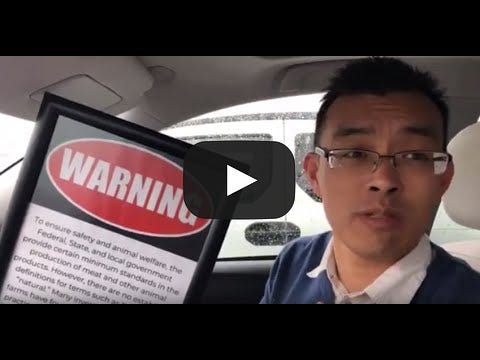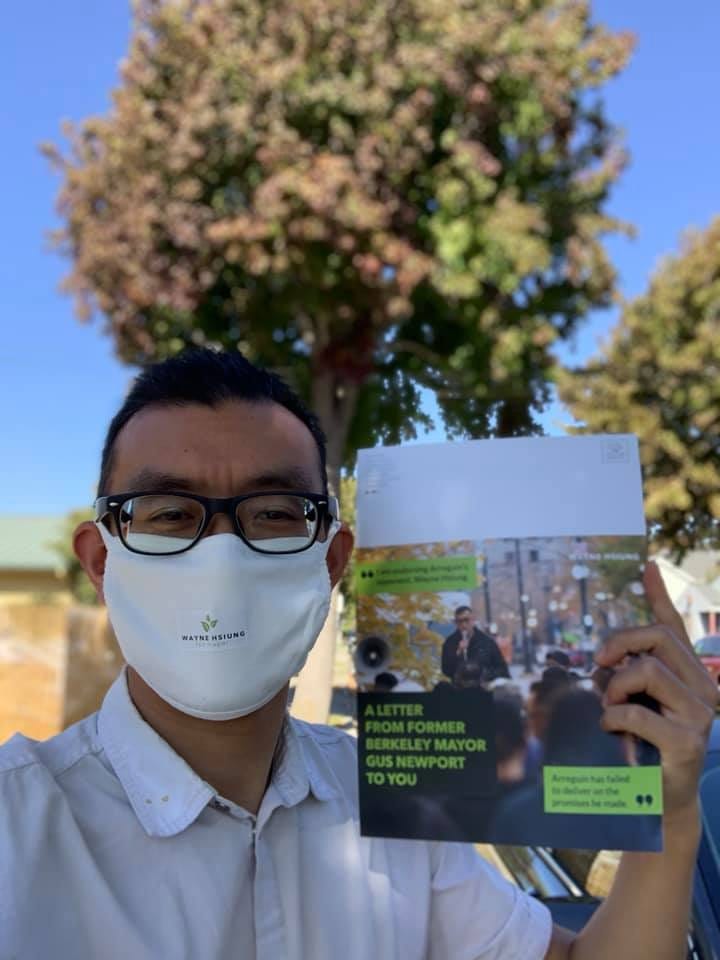|
What I Learned From 100,000+ Conversations about Animal Rights
Most of what you know about outreach is wrong. Here's what actually works.
In 2020, I had around 8000 conversations about animal rights. Granted, not every conversation was exclusively about animal rights. I ran for mayor of Berkeley that year, and voters wanted to talk to me about all sorts of issues. But animal rights inevitably came up, both because it’s a big part of my background, and a big part of the change we were hoping to make. A central part of our platform was a Green District that would be entirely plant-based. It was popular but not popular enough; we only won around 24% of the vote! Even 8,000 conversations couldn’t change that.
But 2020 might not have been my top year, in terms of volume of outreach. From roughly 2004-2009, I was doing outreach at least two times a week and, from 2007-2009, I was doing outreach every day for around 4 hours, nearly 365 days per year. I was at or near the top of the leaderboards published by Vegan Outreach for the top leafleters across the nation. I was probably having around 10,000 conversations a year at my peak.
And perhaps most surprisingly to people who know me now, I did all that talking despite the fact that I was terrified of talking to strangers. The first time I leafleted, and for years thereafter, I found myself shaking before I started to do outreach. I was embarrassed to solicit strangers on the street; and even more embarrassed that, even if someone stopped, I would have nothing interesting to say. And yet I continued doing it, mostly because I saw little downside in being a loser. After all, I had already failed at the most important things I thought I was meant to do in life, and was in a state of utter despair. If people thought I was a weirdo, or a terrible activist, why would I care? That was still better than ending up dead, which is where I assumed I was headed.
I’ve written previously about the specific catalyst moment that transformed me: walking into a slaughterhouse in 2007, and attempting to save a baby lamb. But to be honest, that story and explanation are a little glib. I don’t believe that any single moment truly transforms us, in isolation. Catalyst moments, at best, set us down the path to transformation. And my first experience in a slaughterhouse set me down two paths: the first was to walk into slaughterhouses more, as I saw how easy it was to get in (and out) of modern agricultural facilities. This was the path of open rescue. The second path, however, I’ve written less about: to hand out thousands upon thousands of leaflets to people across the city of Chicago and beyond. This was the path of outreach.
Knowing what I knew, having seen what I had seen, firsthand, and with indisputable lived experience as proof, I was even more motivated to share what I knew to be truth: that our system of meat production, even in a small scale and supposedly “humane” slaughterhouse, such as the one I first visited in Chicago in 2007, was inherently violent and wrong. And, in many ways, the tens of thousands of conversations I had every year, beginning in 2007 and progressing for many years thereafter, transformed me even more than open rescue. They also taught me deep lessons about life, confidence, and communication. Lessons that are surprising to folks that have not run through this sort of gauntlet. Here’s an assortment of the most important ones.
The more you talk to people, the better you get at it. Most people see conversational ability is an inborn gift. This is wrong. It can be taught or, more precisely, it can be learned through experience. I started my outreach experiment in 2004, barely able to complete a coherent sentence. If you see me doing outreach today, it’s hard to get me to stop — even when you threaten to arrest me, as happened at a Colorado Whole Foods back in 2018.

Confidence is everything. Of course, talking a lot is not enough. You need to have an impact. And the one thing that experience does, that you simply cannot create from any other form of learning, is that it gives you confidence. When you have done something 100,000 times, the 100,001st time you do it just isn’t as hard. And that confidence shows. The people you are talking to are more likely to believe what you say, when you say it with confidence.
Confidence comes from presence, warmth, and curiosity — not inherent charisma. But one of the strange things I noticed about confidence is that it did not necessarily lead my communication to be more polished or perfect. To the contrary, before I had 100,000 conversations, I was able to have reasonably polished conversations with people, if I sufficiently prepared, and stuck to my talking points. But these conversations were not actually confident, or effective, because they were performances. And human beings are shockingly good at sniffing things out, when you are telling them a lie. Confidence, instead, comes from three other attributes.
Presence, or the ability to turn off your internal doubts, the inner voice in your head asking, “What does this person think of me? What if I make a mistake?” and simply be present for the person you are talking to.
Warmth, or the habit of showing goodwill towards the people around you. People like and trust others more, when they feel that they are liked and trusted themselves. Warmth assists this.
Curiosity, or genuine interest in another person — their background, their beliefs, and their passions in life. This is consistently one of the most under-appreciated aspects of confidence and leadership, but people who are secure in themselves feel more safe and comfortable to be genuinely curious about others.
Listening is way more important than talking. In relation to curiosity, listening is key. Some of the most effective communicators I know are effective primarily because they ask good and genuine questions, and then do a great job of listening to the answers. If you’re able to synthesize what a person says, and repeat it back to them in a way that they see as true to their original message, you’ll know you’re getting better at listening! But you can also ask people you’re talking to, “Do you feel heard?” That’s a good sign that you’re not doing the things that so many do — looking away, yawning, interrupting, or playing with your phone — that destroy good listening. And listening, again, is far more important than talking, if your goal is good conversations.
Especially if you can get someone to share an emotional story. In the literature on outreach, there is a particular technique called “deep canvassing.” The idea behind this technique is to spend more time — 10 minutes or more — on each conversation, but focus on quality over quantity. The specific quality that deep canvassing is looking for, however, is not just length but perspective sharing, i.e., getting the person with whom you are talking, to share an emotional or meaningful story. When they share an emotional story, and you’re vibing with it — feeling the same emotion they are — that’s when you know a conversation is good. It’s one of the primary ways that I’ve changed many anti-animal rights people to being surprisingly supportive of animal rights. I’ve simply asked, “What do animals mean to you?” And many, even those who start out harassing us at a protest, end up sharing an emotional story.
But when you listen, listen like a trampoline. But you can’t ONLY listen. All of us have been in conversations where one person talks, on and on, and never stops. These aren’t the most fun conversations for the person being talked to, and they, in truth, are not the most meaningful conversations even for the person who won’t stop talking. There’s no intimacy or even connection in a monologue! The way to overcome this is to attempt to listen like a trampoline. Trampolines, you see, have high energy, but they constantly bounce back and forth. Effective conversations are the same. They start with one person but, perhaps due to a question or comment, bounce to the other person. Then, quickly, they bounce back. The conversation is going from one person to the next, in a high energy way! The best conversations have this attribute.
So if you are talking, and noticing that the other person isn’t saying much, try bouncing the conversation like a trampoline to them, by asking a meaningful question. If nothing else works, you can always ask, “What’s meaningful to you?” And if a person is talking and won’t stop, try bouncing the conversation away from them, with a simple interjection, “Can I interrupt you for a moment, and ask you about something that’s important to me?”
—
A few quick updates:
The podcast is going on hiatus, but I’ll record one last one tomorrow. I’ll explain why we’re putting it on pause, and when it might come back. Stay tuned for that to come out on Thursday!
I’m still planning to write part 2 of the slaughter to sanctuary series. The first blog got a lot of really great comments and feedback. I want to make the second part good, and I just haven’t had the time to develop what I want to write and say — yet!
I’ll likely be on the East Coast later this month, specifically in the Toronto/NYC area. If you’re in either city, let me know! I’m thinking about meeting with activists in either or both cities, and possibly even delivering a training — there’s so much I’ve learned about the right to rescue, and how to win open rescue cases in court — while I’m out there.
That’s all for now! Until next time.

